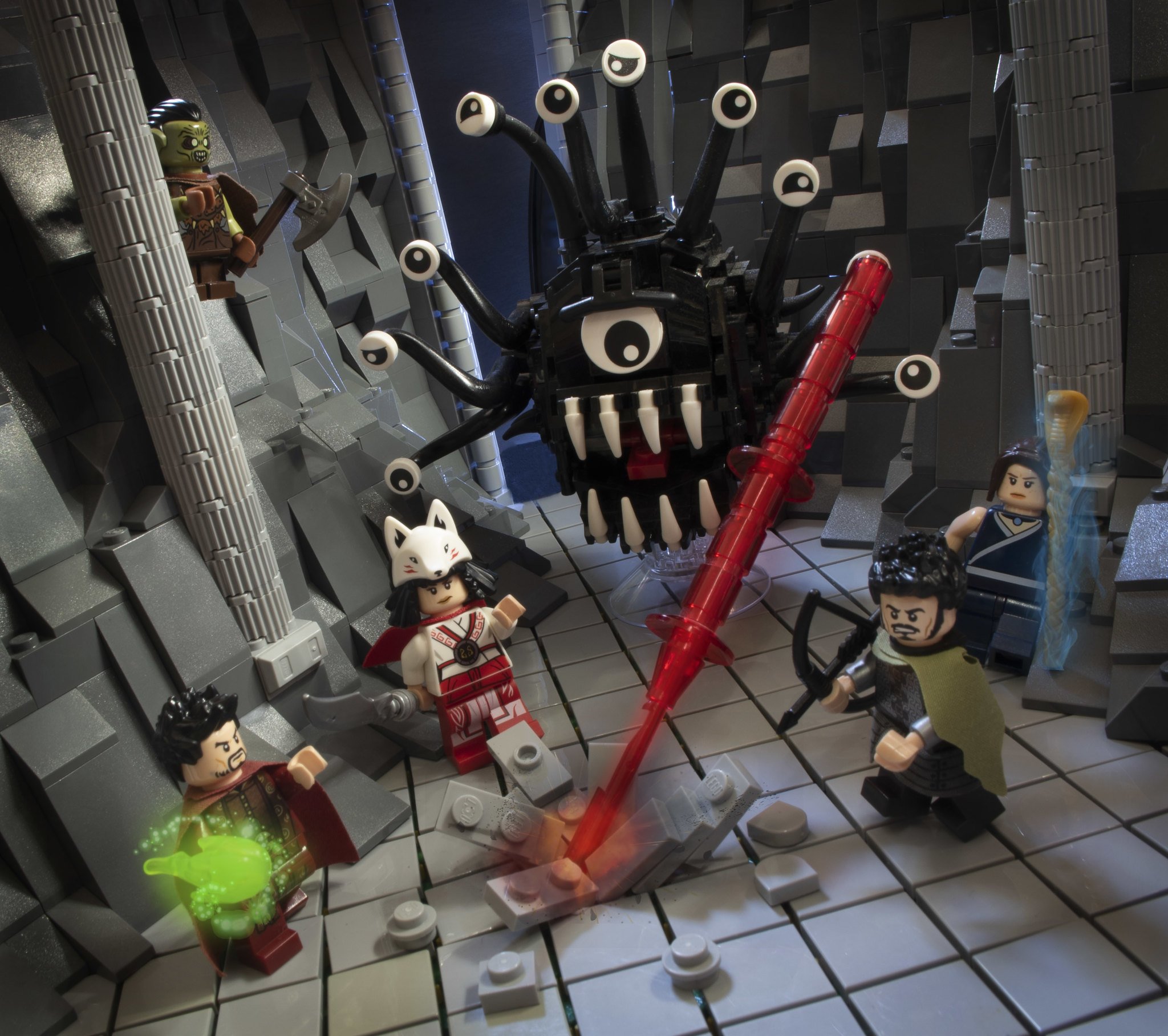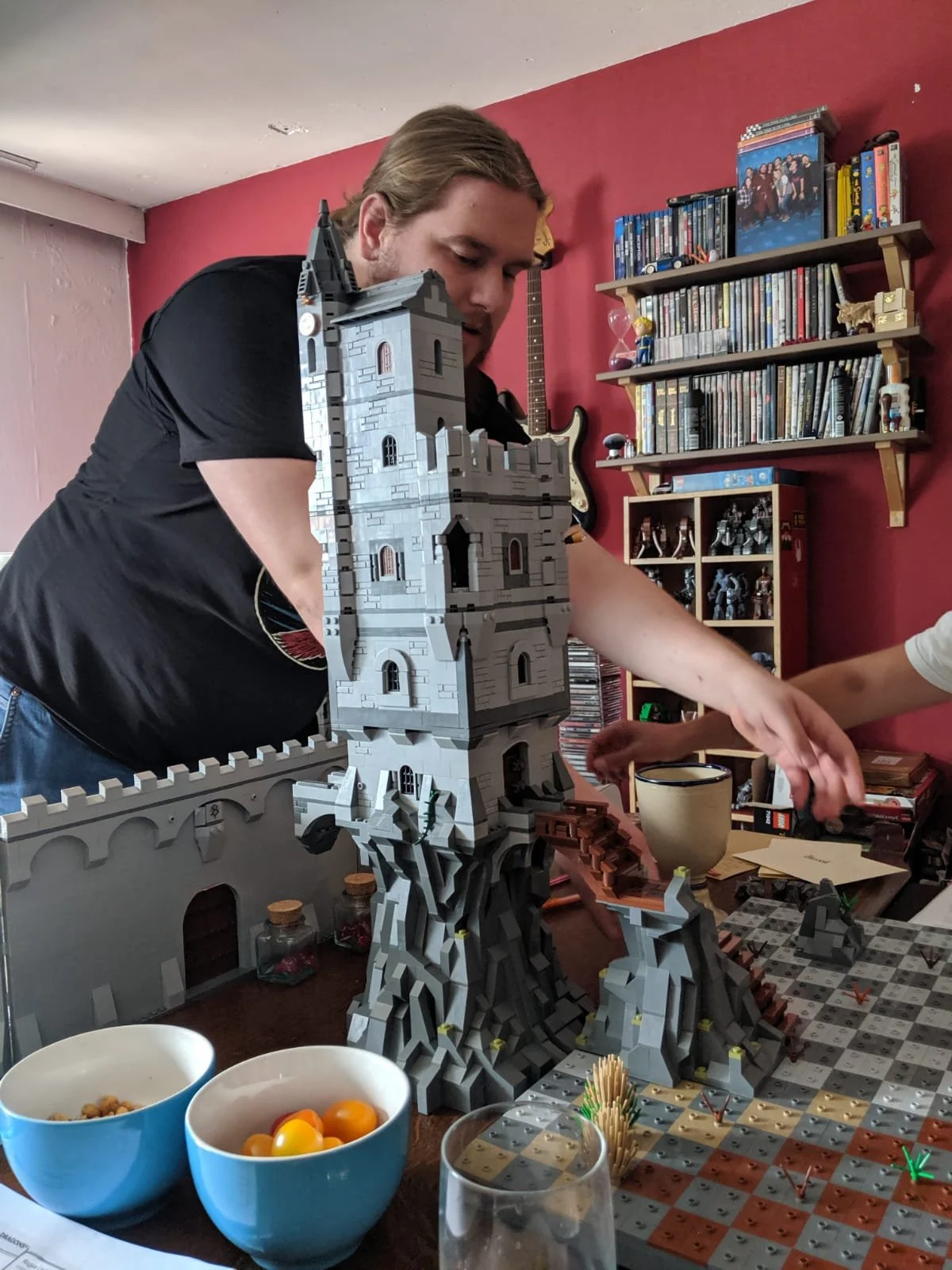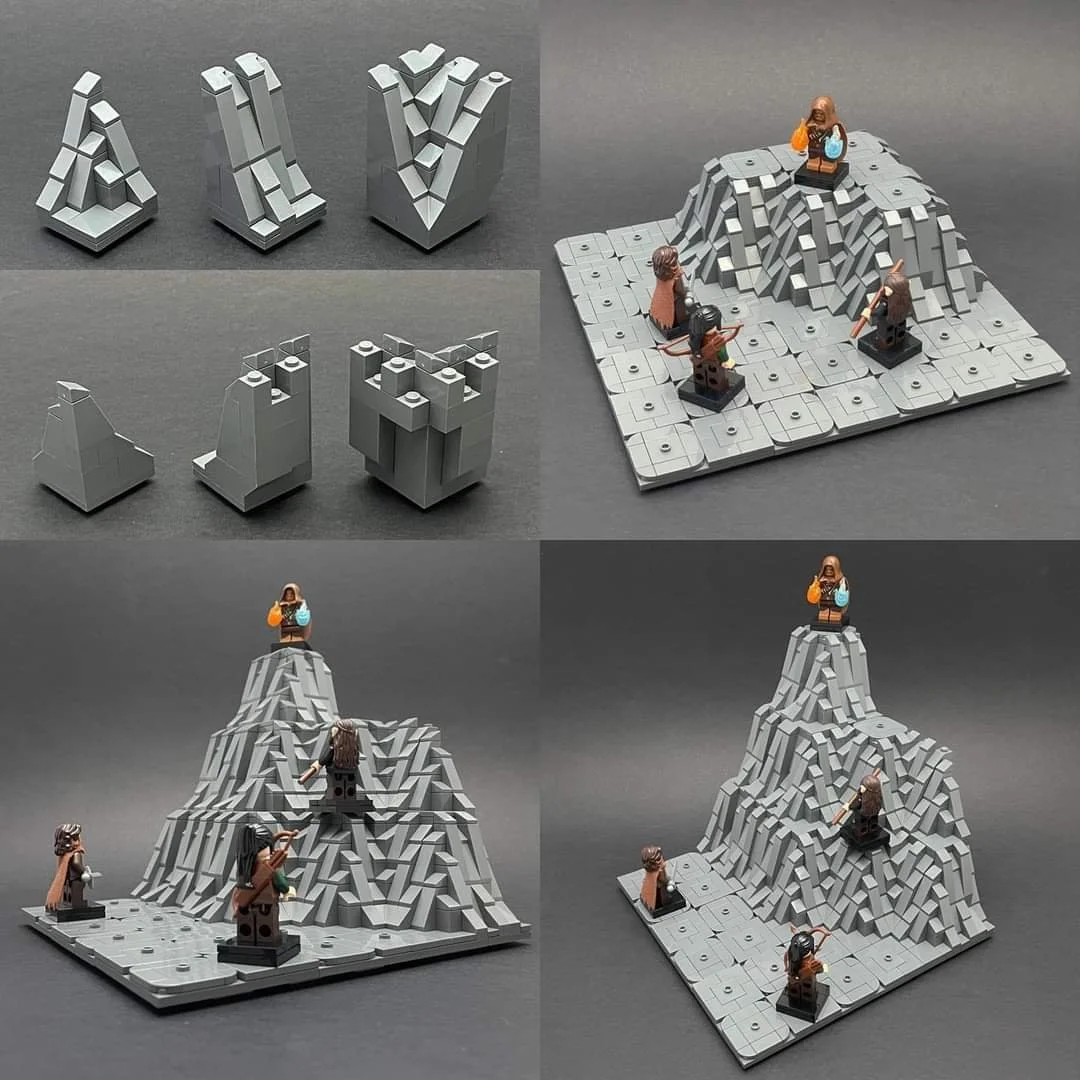LEGO Dungeons & Dragons: Build for Initiative
/You step into the hallway, it is dark, and you hear noises coming from somewhere in front of you. Is it what you are here for? You don’t know. The heavy boots of your Dwarven friend step on the damp stone, his knuckles white where he grips his axe. It seems like no-one has been in these ruins for years, yet you unmistakably hear a noise somewhere up ahead. You unsheath your sword and walk forward, quietly and gingerly. The noise gets louder and seems to echo along the high stone walls. A tapestry hangs on the wall, rotting away, but just enough is visible.
The old baron’s face looks down upon you. You swallow, a lump of fear caught in your throat. Your friends urge you to move on. The creak of a door-hinge a few feet in front of you makes everybody freeze as your Elven companion nocks an arrow on their bow. Slowly the three of you creep closer to the end of the hallway A loud crack deafens you as the door in front of you suddenly blows open, and an almost spectral figure leaps at you.
Roll initiative…
Ben Cossy has made a scene revolving around one of the most infamous D&D monsters, the Beholder (instructions by Taylor Walker)
Now if this in any way seems familiar to you, you must have played any of the dozens of tabletop role-playing games like Dungeons & Dragons or Pathfinder. Over the past decade or so, these games have become a lot more popular and I daresay even mainstream. It has popped up in TV shows like The Big Bang Theory, Community, and Stranger Things. Several celebrities like Vin Diesel, Terry Crews and Joe Manganiello have been open about it and discussed playing in TV interviews and other places on and offline.
Even many employees of The LEGO Company admit to playing D&D on a regular basis. If this is unfamiliar to you, let me introduce you to the wondrous world of using LEGO for tabletop roleplaying games. To explain any of this to you in detail would probably take more than just one article, so I’ll try to sum it up a bit.
What Is D&D?
This is me leading the players through an adventure that lead them to a wizard’s tower.
Dungeons & Dragons is a game that is played with multiple people. One of the most important roles at the table is the Dungeon Master or Game Master. They basically describe the world and surroundings, and role-play the characters the other players encounter. So if they say that there is a goblin trying to hit you with its sword, you have to react to this. To decide what happens, say you want to dodge out of the way, you have to roll a twenty-sided die to see if you succeed or fail.
Herein lies the magic to me; you can do the most amazing things just because you rolled high enough, or you can fail spectacularly because you rolled very low. No game is ever exactly the same because a lot of how the story develops depends on the roll of a die. More often than not the Dungeon Master will see their well-thought-out story take a U-turn because one of the players made a bold choice that they did not anticipate. The choices you make as a player have an impact on the world around you, just as in real life.
Now of course this is an oversimplification of the rules, and I left out a lot (although I will come back to the combat a bit later in this article), but that is basically the gist of it. I’ve come to love this game because it is a couple of hours sitting around a table with friends telling a story together about epic adventures.
The hero’s of Vox Machina, featured in the first campaign of Critical Role and recently in the first season of The Legend of Vox Machina on Amazon Prime. These were made by Chris Maddison.
When Did You Get Into All Of This?
I was introduced to Dungeons & Dragons in late 2016. I was instantly hooked. During my first game, the Dungeon Master referenced a show on YouTube named Critical Role where a bunch of nerdy-ass voice actors sit around and roll some dice. They have since become the most paid streamer on Twitch and have the record for a Kickstarter that has raised the most money for a film or TV project. Since I did not have a party I could play with close to me, I decided to give them a look and again, was completely hooked. That might be a huge understatement. I completely engulfed myself in their content.
Within a month I had watched these close friends defeat dark dwarves, giants, dragons and a whole slew of other monsters, as well as stage a revolution in a town that was under control by an evil vampire and his necromancer wife. As I was watching this I thought: I can do this! If I just find a bunch of friends, I can totally do this, and have fun just as they can. I was right; Dungeons & Dragons is a fun experience in shared storytelling with your friends around a table.
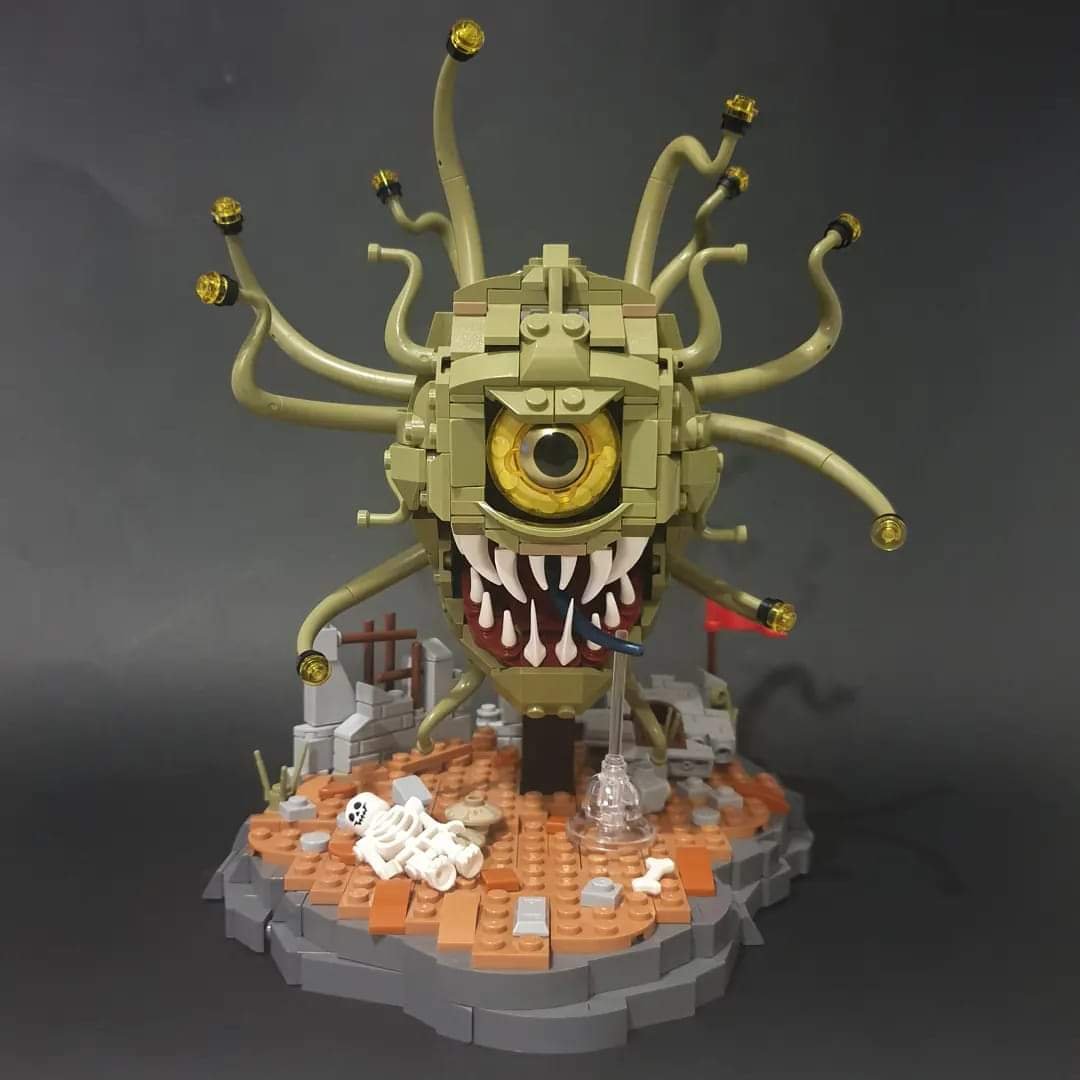
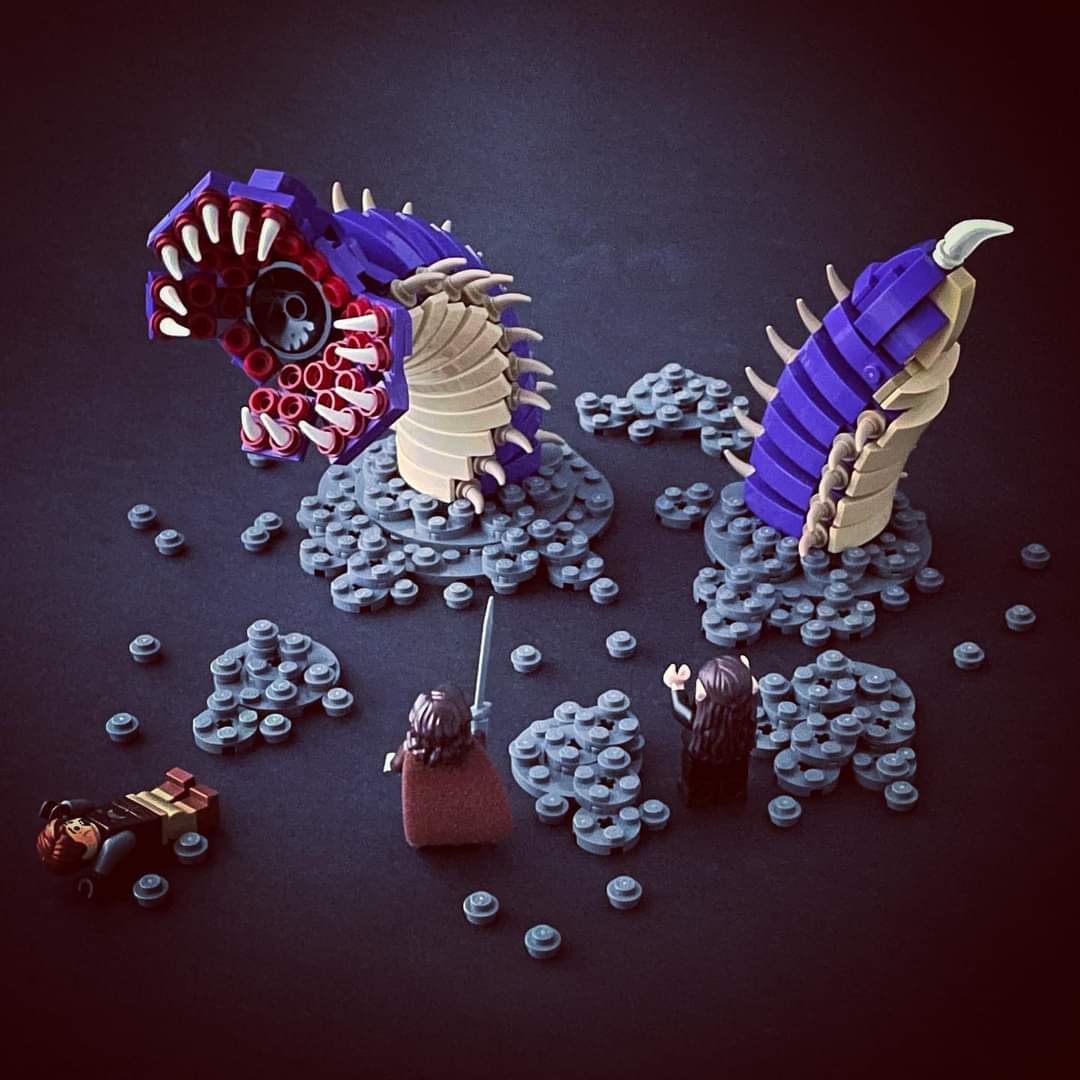
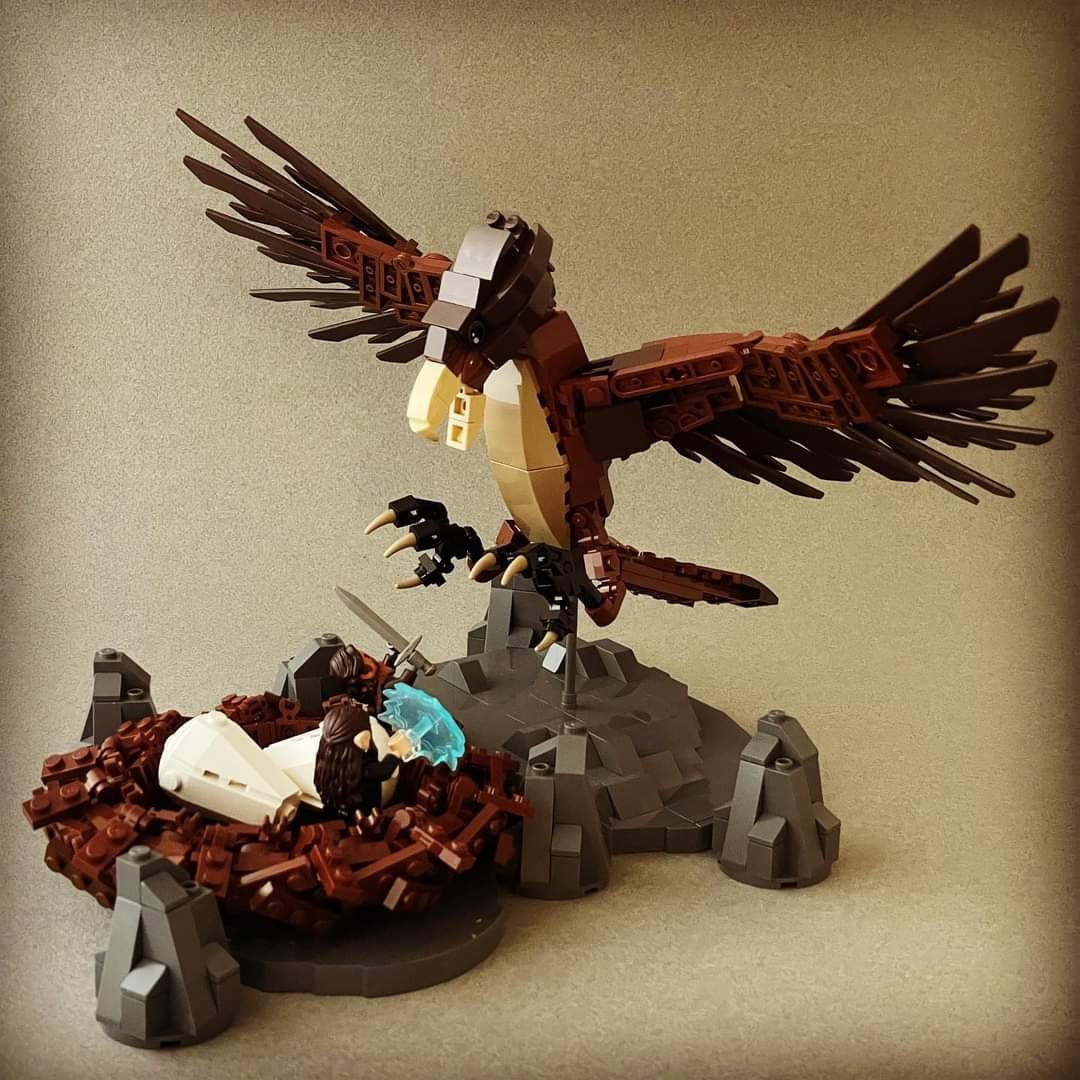
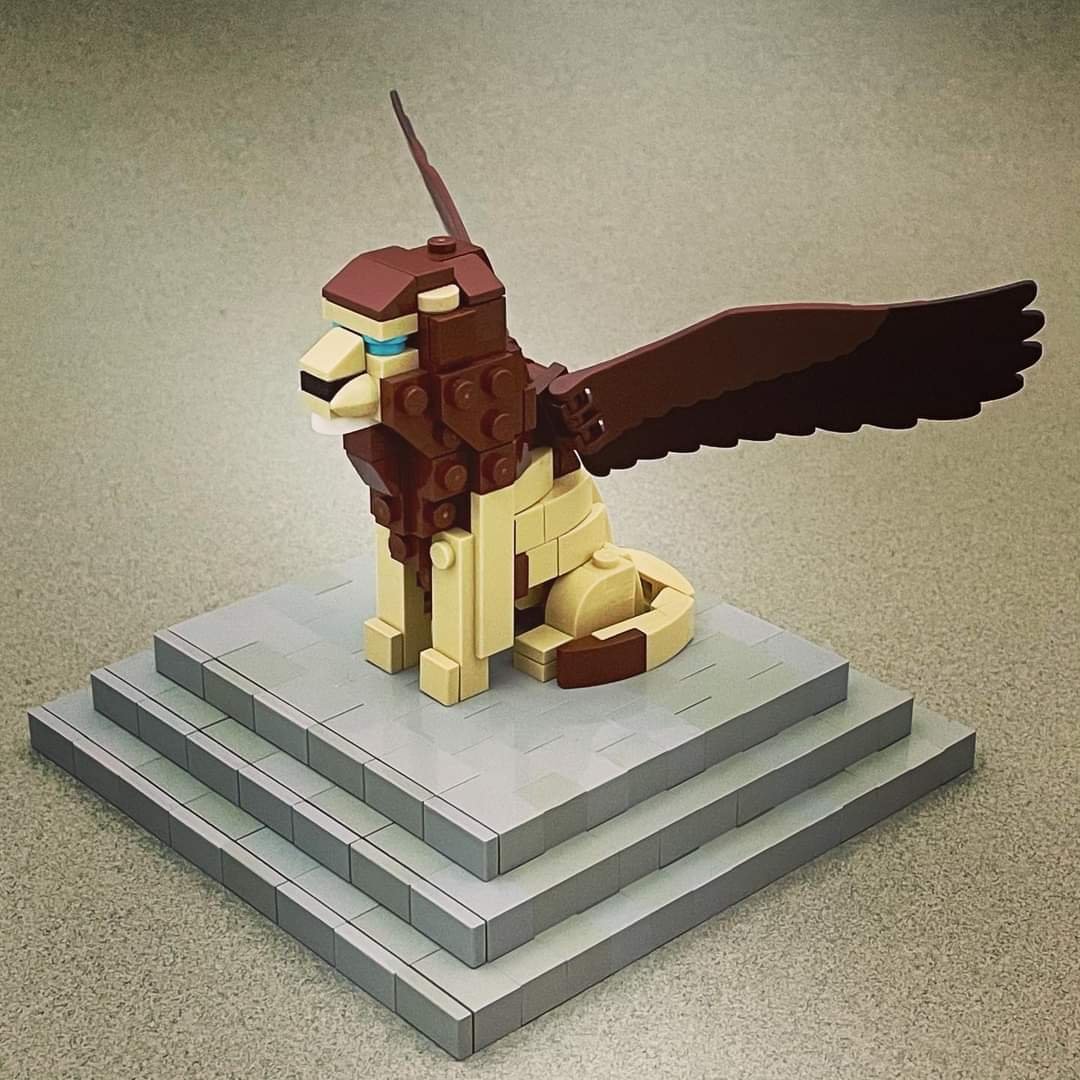

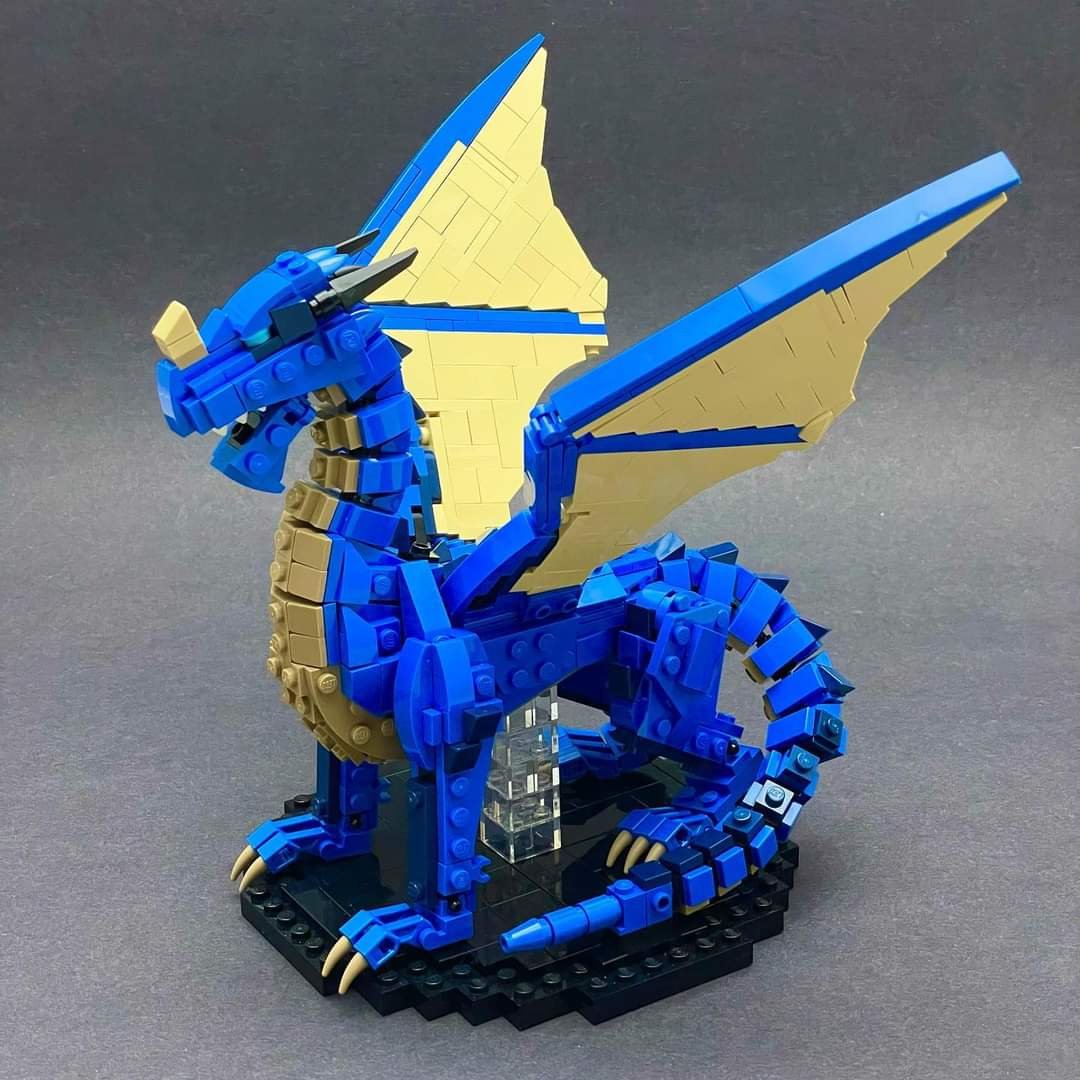
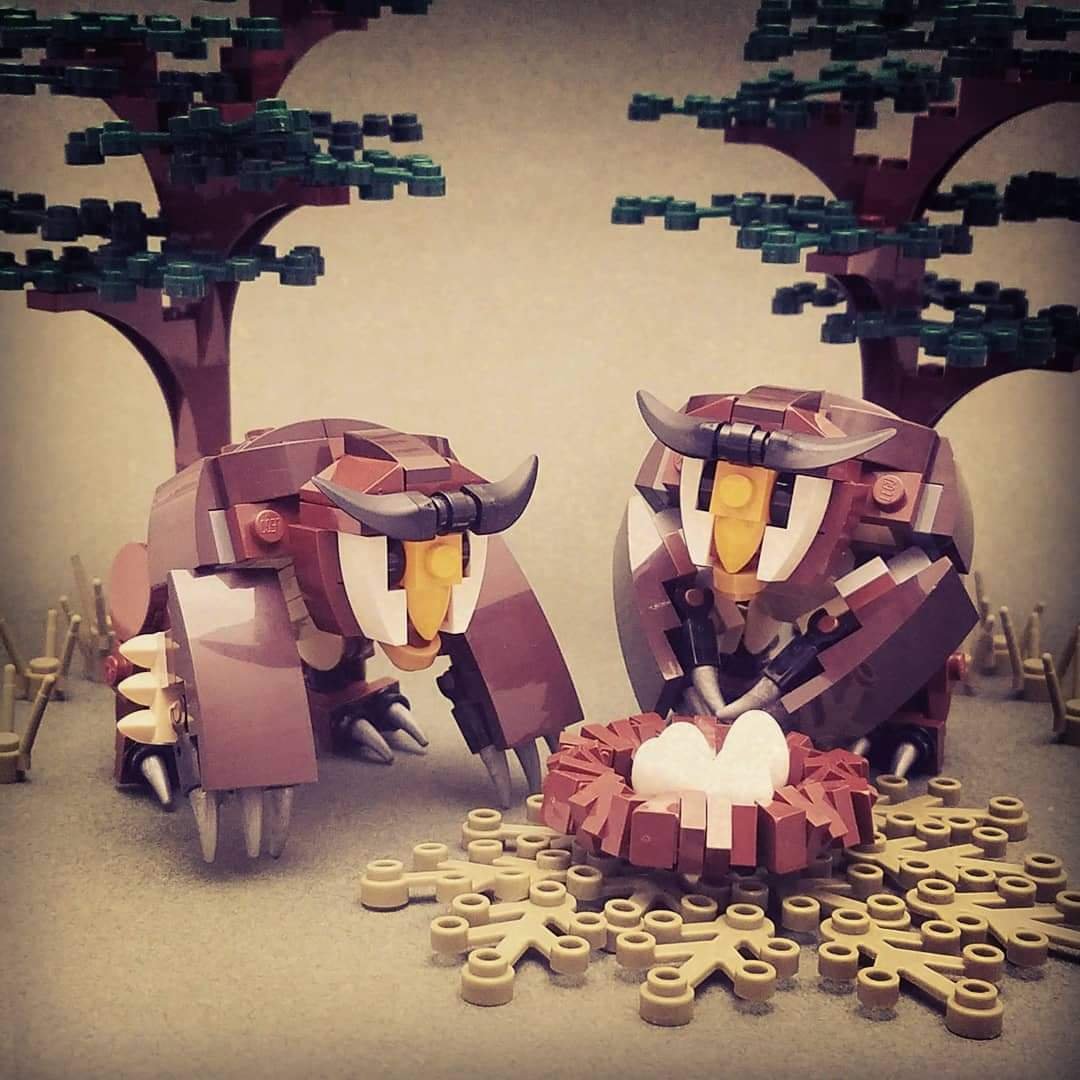
(Creatures by Chris Maddison and Dannii Brighton)
What Does D&D Have To Do With LEGO?
Now I can almost hear you thinking: what does this have to do in the slightest with LEGO? Well, an important part of playing this game is the combat. As a player, you make a character that has certain abilities they can use to defeat monsters and other creatures. You can be all the classic fantasy tropes characters you want to be, from a wizard who casts spells from far away, a fighter who gets all up close and personal with their sword and shield, a cleric who is there to support and heal the other players, to a sneaky rogue assassin who slips in to take out monsters without them realizing it until it’s too late. There are many more types of characters you can make and Wizards of the Coast comes out with supplements to these classes several times a year to give you even more possibilities to create.
The combat is split into two main things: a round and your turn. A round lasts six seconds in-game, during which every player and the monster they are fighting gets a turn. During that turn, they can move a certain distance, do an action like hit the creature they are fighting, and use a bonus action to drink a healing potion, for instance. To see where the players are during such a combat most Dungeon Masters use a grid on which every 1x1 inch square represents 5x5 feet. Special miniature figures can be bought or 3d-printed, and then painted to use as a representation of the player’s characters or creatures they are fighting. There are several companies that even offer terrain and buildings that represent the location they are fighting the creatures.
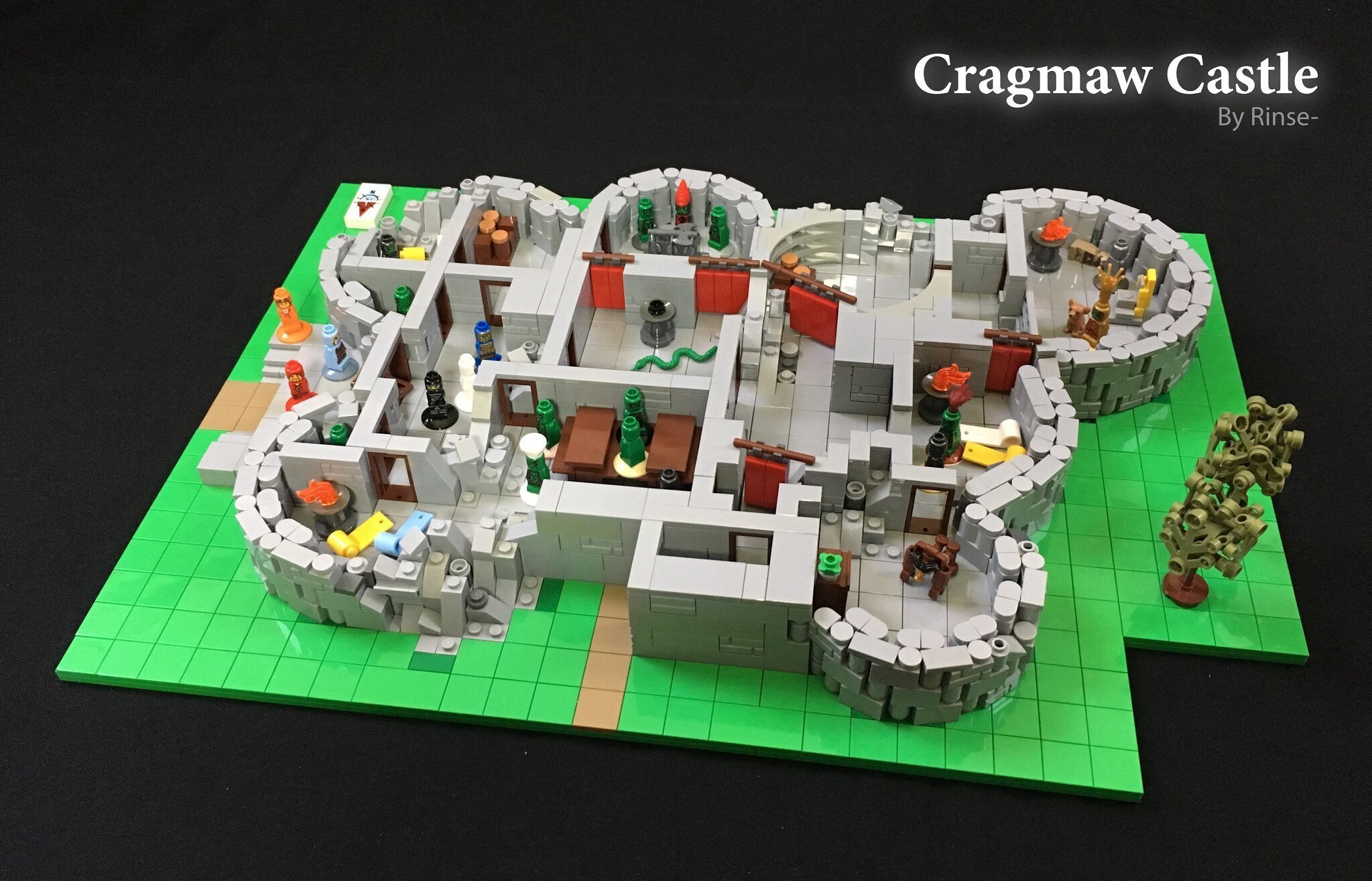
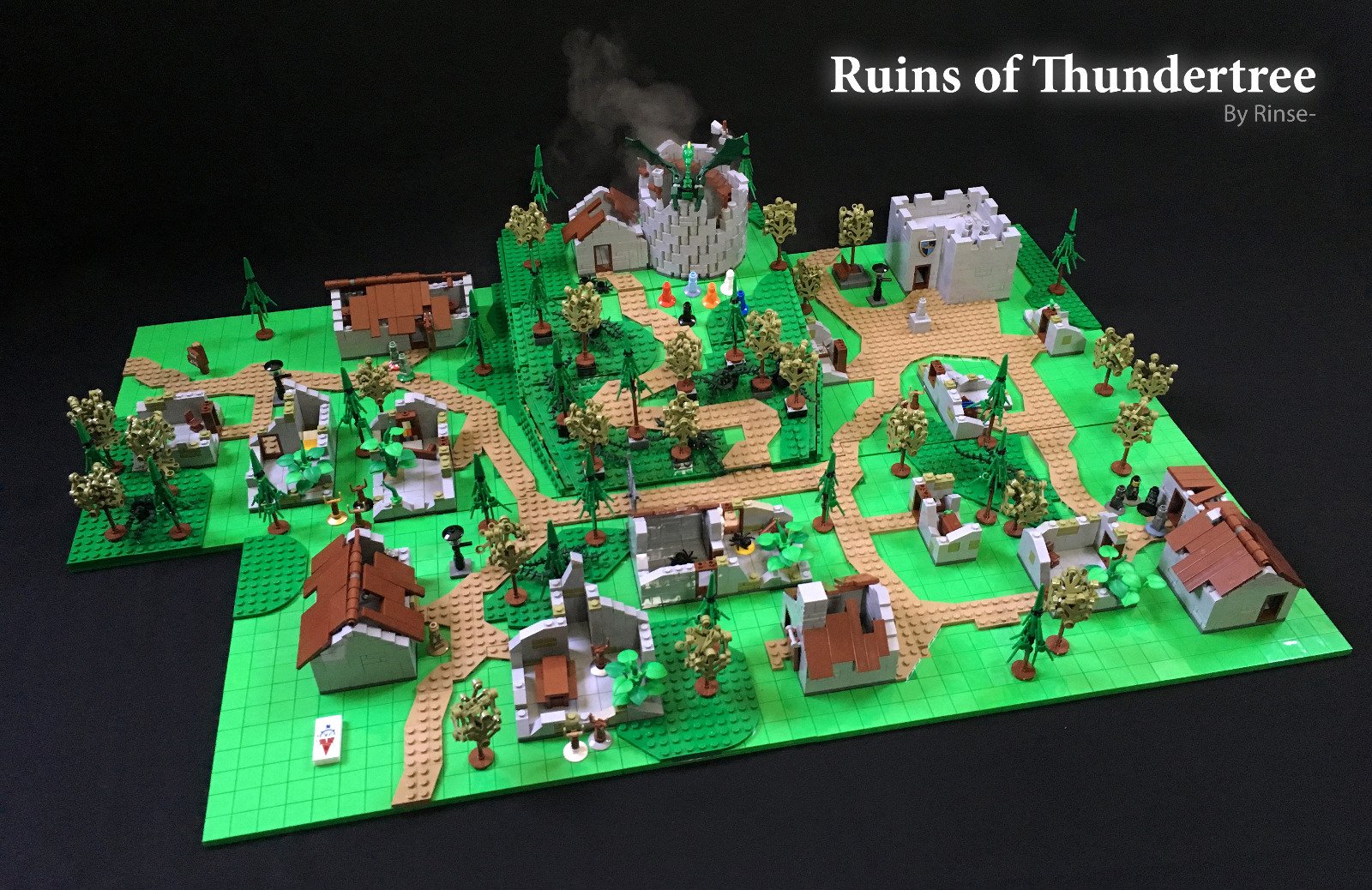
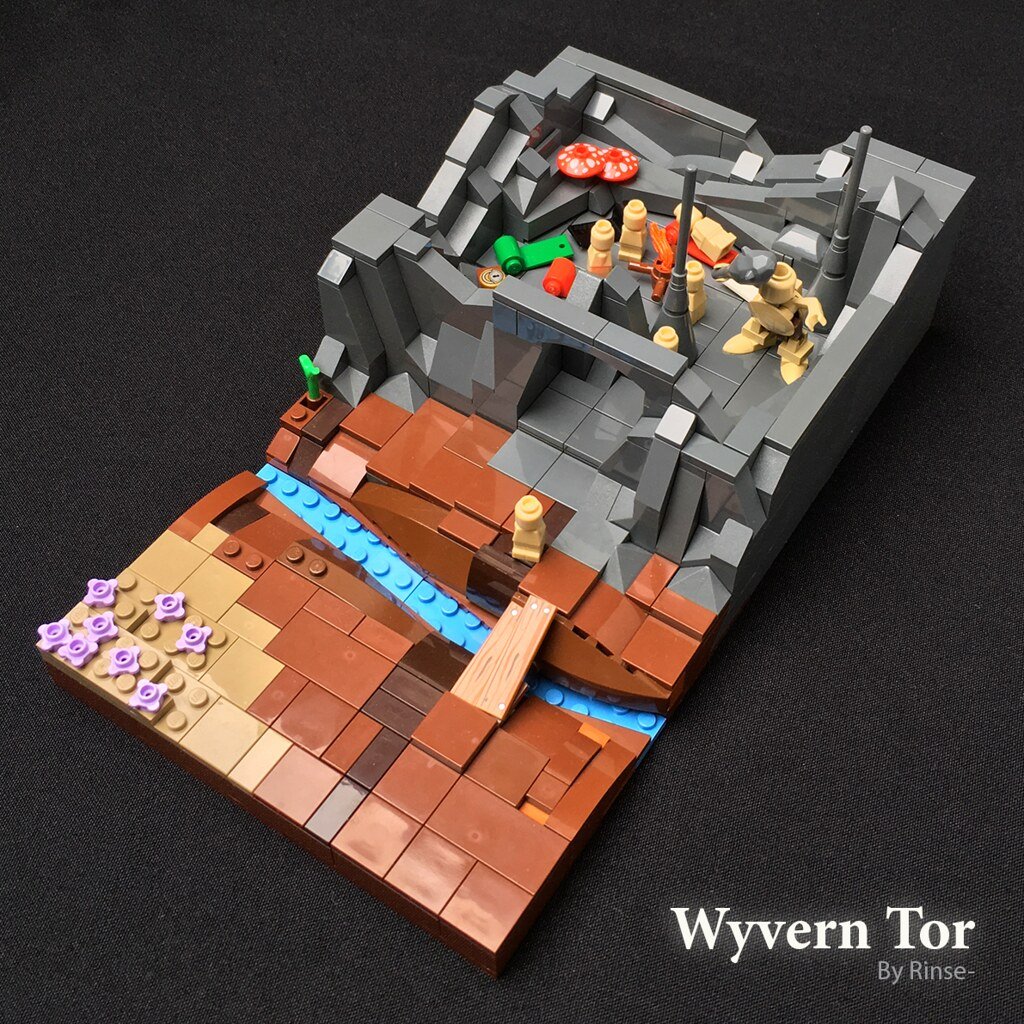
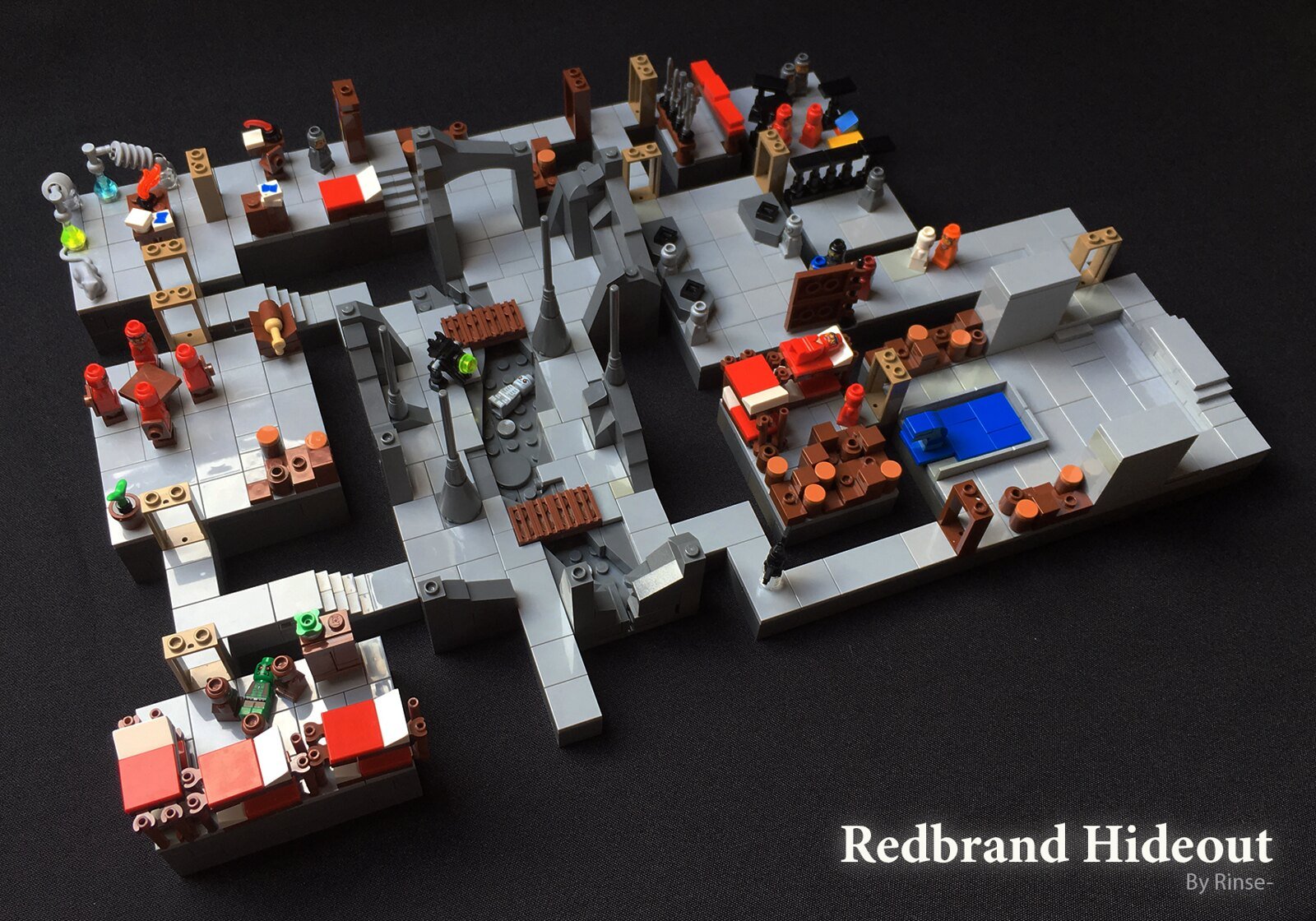
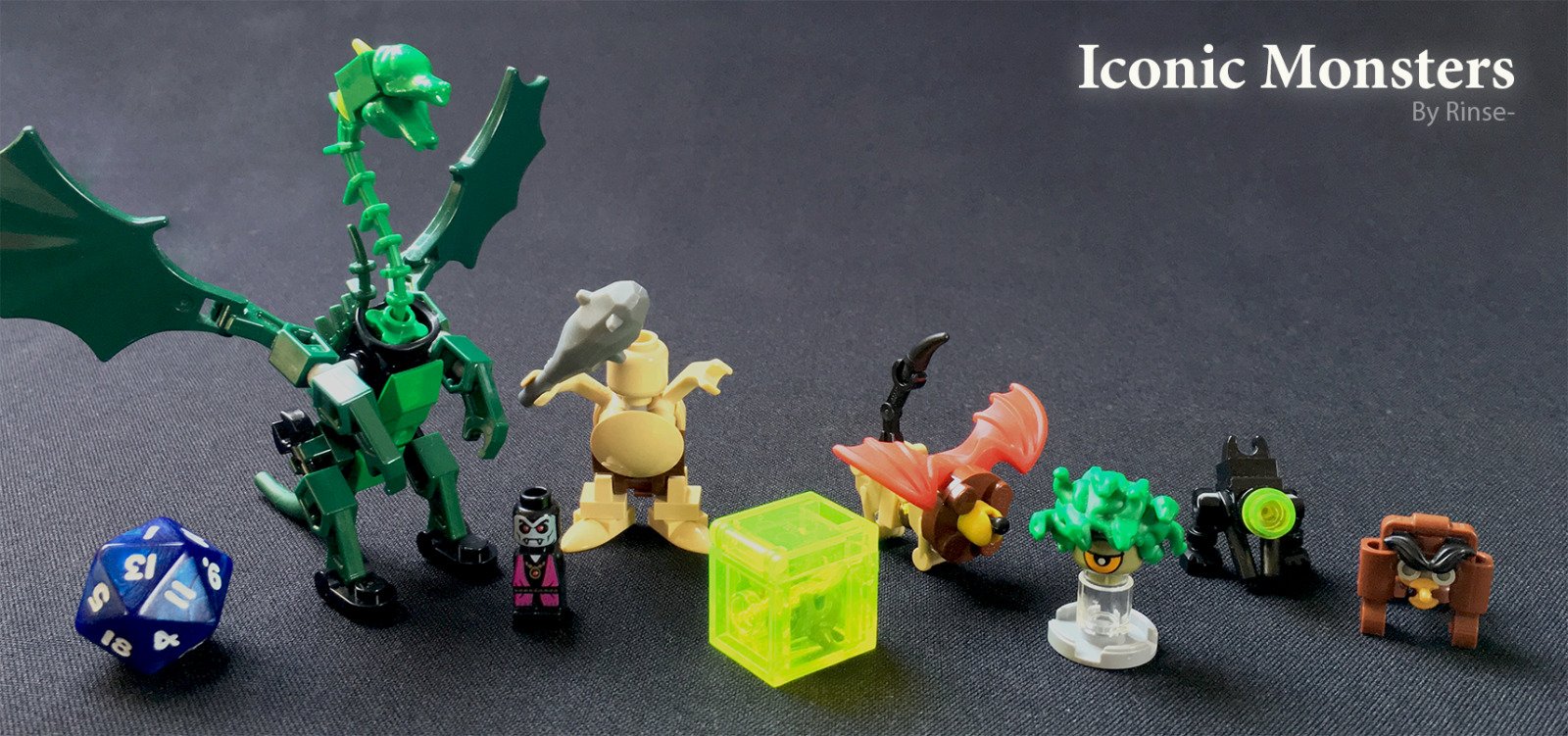
What Else Could Be Used For D&D?
Now the cost of these miniature figures can really add up, and to run a game you can need a lot of them, making it a quite expensive hobby (not that we know anything about a hobby being expensive or anything, looking at you LEGO Goats…). The battle maps themselves, however, can be cheap as long as you have a printer or a map on which you can draw yourself. But I had none of that and was already spending way too much on other hobbies. Not only that, I just cannot paint those little itty-bitty minis. It takes too much patience, and it is not rewarding for me to spend my time doing this. Luckily enough I had a vast collection of a certain plastic substance that could be perfectly used for Dungeons & Dragons. In fact, I think it is the best product to use to play this game.
At the time I was just using the yellow minifigures for most of my builds, but I still had loads of the nougat-coloured ones laying around. I looked at the Lord of the Rings minifigures and it struck me how great these were for this exact purpose, as I could use them for Elves, Orcs, Goblins, Dwarves and Halflings as well as a slew of other creatures I could come up with. I soon realized that I could use this perfectly without having to use my prized yellow minifigures and could use both simultaneously without the hobbies interfering with each other.
On of the battle maps I made. Each square represents 5 by 5 feet. The trees are made on a 6x6 studs base so I can take them off quickly and use the map for a different environment.
I realized LEGO minifigures in general were perfect for Dungeons & Dragons as they are greatly customizable. When the players find new weapons or items in game, like cloaks and armor, I can actually give them to the players. You just put their heads on a different torso or replace a weapon with another one, and you’re done. I don’t have to order new miniatures, and give them a new paint job all over again, it literally takes a few seconds. One of my players even found out that I had different coloured hair with Elf-ears and immediately looked for a hairdresser in-game to get her hair dyed (I have mentioned it is High Fantasy right?).
I soon realized that I made the perfect decision to use nougat coloured minifigures as I could use a diverse amount of figures from all over to actually represent different cultures and different people. I soon made the switch completely, and now only use nougat coloured figures in all my builds, something my wallet disagrees with me about every time I wander around on BrickLink. I have found that my players love it when they get new stuff and are able to “dress up” their characters.
What About All The Crazy Monsters?
Whenever they encounter creatures I describe to them how they look based on the minifigure I have prepared which makes the game so much more immersive for them. This also comes around to the only downside I see to using LEGO for Dungeons & Dragons. Over the last seven years, they have released several books and supplements with new creatures and classes, which makes it a bit difficult to recreate them with LEGO.
Now I know that there are a lot of third-party products that can help, however I am a purist at heart and cannot get myself to buy stuff that is not LEGO. But since I am the one who describes the world to my players, I decide what certain creatures look like. I explain to new players why they do not completely look like the characters displayed in the official books. I must add here that I homebrewed my own world, which honestly gives me a lot more freedom. But even with campaign modules produced by official channels, they often just give you a stat block. It is still up to the Dungeon Master to describe what the players encounter.
[Editor’s note: Even though, Bram might not indulge in third-party options, stay tuned for our follow-up article all about how people have customized their D&D creations.]
These modular pieces were designed by Chris Maddison as well and are very useful to build a mountain of cliffside quickly with just a few premade pieces. The effect works pretty well, although it is quite parts intensive.
How Do You Make A LEGO Game Board?
The grid itself can be done in many ways. You can still use the standard 1x1 inch grid, but scale-wise it doesn’t really fit well as LEGO minifigures are slightly bigger. You could also go for a 2x2 stud grid and use microfigures that are featured in the LEGO games, but it serves the same problems I have with the miniatures: not enough customization. Although I have used them for games, my friend, Rinse-Jan, uses them a lot. I have found that the customization of the actual minifigures is much more fun and immersive.
The closest I came to a scale-accurate grid was a grid consisting of squares of 4x4 studs to represent the 5x5 feet. To still have a bit more mobility in placing the minifigures, I used 2x2 jumper tiles. These are often a lot cheaper than other tiles of the same size and can be bought in bulk in a lot of BrickLink stores. As you can see in the picture, I’ve made a simple large-scale base on which I can pretty much place anything. I have pre-made several small builds that I can place quickly on this grid to make a nice dynamic combat map, like some rocks, crumbling walls and even houses that I can place on the grid quickly.
These are actually very useful for the players, or the creatures they are fighting, to find cover and avoid taking damage in some cases. Some abilities or spells even rely on line of sight, so if the player cannot see the creature they are targeting they cannot actually hit them which is something that I can physically do when I look from the minifigure’s point of view. This solves a lot of debate at the table so it’s also very practical.
A battle on a cemetery. At the center bottom you can see a technic brick that can hold a technic axle. I use these to connect hallways or different sections of a map the player have not discovered yet.
How Has D&D Changed The Way You Look At LEGO?
I have come to find that using LEGO for my D&D games has changed the way I build and use parts. Now when I look at new sets I look for interesting minifigures and utensils I can use in my games. Sets like the Classroom books from Harry Potter I used to pass as I did not see any use for them and parts they used would probably be found in other more useful sets. But now I see in the interiors for a mad wizard’s office or the contents of a Lich’s lair that I can place on a map without having to build it from scratch.
It has made me less critical of myself as well. Most of the players I play with don’t have LEGO as a hobby so it hardly matters what I put in front of them, they love it. Even if I just use a set as some decorations, they are amazed and ask me where it is from. I think we as AFOLs have been spoiled a lot over the last few years with the high quality of sets and builds. It is easy to forget that most “normal” people are not that critical of what LEGO puts into sets, making them a lot easier to please.
The thing I love the most about all this is whenever my players have to move their minifigure across the map, they often give them little steps as if they are actually walking to their destination. I used to say that I don’t play with LEGO, I build with it. I’m glad that I can say this is no longer true. I do actually play with it still, and the best thing is I do it with friends to tell an epic story together about heroes, warriors, wizards and fighting against evil, dark entities.
BrickNerd will continue to explore the possibilities of using LEGO and Dungeons & Dragons! Until our next article about customization, you can head to groups like LEGO Dungeons & Dragons on Facebook to explore the amazing resources that the community has to offer.
What experience do you have with integrating LEGO into your role playing games? Share your thoughts in the comment section below.
Do you want to help BrickNerd continue publishing articles like this one? Become a top patron like Charlie Stephens, Marc & Liz Puleo, Paige Mueller, Rob Klingberg from Brickstuff, John & Joshua Hanlon from Beyond the Brick, Megan Lum, and Andy Price to show your support, get early access, exclusive swag and more.

